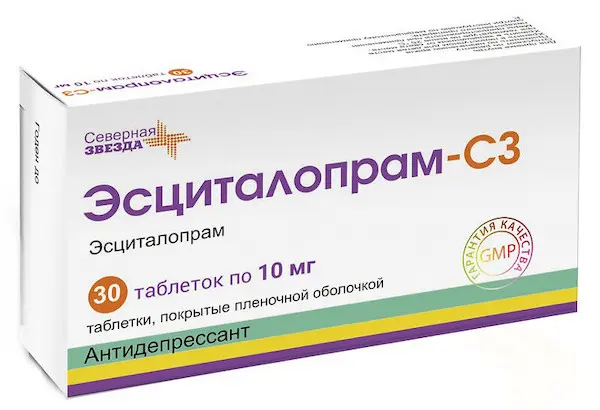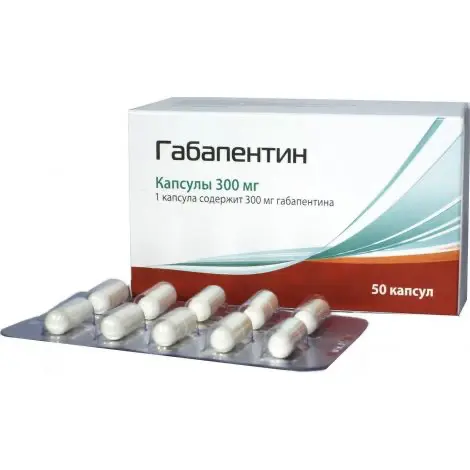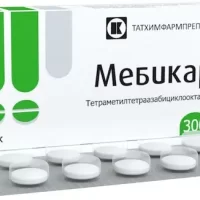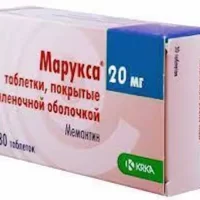Description
Estcitalopram Pharmacodynamics
Escitalopram is a selective serotonin reuptake inhibitor (5-NT) with high affinity for the primary active center. It also binds to the allosteric center on the serotonin transporter with an affinity 1000 times lower.
Escitalopram has no or low affinity for a number of receptors, including 5-HT1A, 5-HT2, DA D1 and D2 alpha1, alpha2 -, beta-adrenoreceptors, histamine H1, cholinergic muscarinic, benzodiazepine and opioid receptors.
Inhibition of 5-NT reuptake is the only possible mechanism of action that explains the pharmacological and clinical effects of escitalopram.
Clinical efficacy
Severe Depressive Episodes.
The efficacy of Escitalopram in the emergency treatment of severe depressive episodes was found in three of four double-blind, placebo-controlled, short-term (8-week) studies. During the long-term Breakdown Prevention Study, 274 patients who completed the initial 8-week phase of the open-label study and were taking escitalopram in doses of 10 or 20 mg per day were randomized to receive escitalopram in the same dosage or placebo for up to 36 weeks thereafter. Throughout this study, patients who continued to take escitalopram did not experience disruption for a longer period of time over the next 36 weeks compared to those who took placebo.
Social phobia.
Estcitalopram was shown to be effective in both three short-term (12-week) studies and in a 6-month study to prevent disruption in patients with social phobia. During the 24-week dose-fitting study, escitalopram was shown to be effective at doses of 5, 10, and 20 mg.
Generalized anxiety disorder.
Estcitalopram at doses of 10 and 20 mg daily was shown to be effective in four of the four placebo-controlled studies.
A pooled analysis of data from the three pooled studies, including 421 patients taking escitalopram and 419 patients taking placebo, included 47.5% and 28.9% of patients in whom treatment reached its goal, respectively, and 37.1% and 20.8% of patients whose disease went into remission. Sustained effects were observed starting at 1 week.
Sustained efficacy of escitalopram at a dose of 20 mg daily was demonstrated in a 24- to 76-week randomized trial aimed at sustaining treatment efficacy, conducted with 373 patients who showed improvement during the initial 12-week open-label trial. Obsessive-compulsive disorder.
In a randomized, double-blind clinical trial, the effects of escitalopram at a dose of 20 mg daily were compared with placebo based on the Iel-Brown Obsessive-Compulsive Scale scores after 12 weeks. After 24 weeks, escitalopram at doses of 10 and 20 mg per day showed better results than placebo.
Relapse prevention was demonstrated when escitalopram was administered at doses of 10 and 20 mg per day by patients treated with escitalopram who showed successful results throughout the 16-week open-label study who participated in a 24-week randomized, double-blind, placebo-controlled trial. Throughout the double-blind, placebo-controlled ECG study conducted in healthy patients, the QT difference from the isoline (Fridericia formula correction) was 4.3 msec. (90% CI: 2.2, 6.4) at the 10-mg daily dose and 10.7 msec. (90% CI: 8.6, 12.8) at 30 mg per day.
Indications .
- Depressive disorders;
- Panic disorder with/without agoraphobia;
- Social anxiety disorder (social phobia);
- Generalized anxiety disorder.
Contraindications
- Hypersensitivity to escitalopram or other drug components;
- concomitant use with monoamine oxidase inhibitors (MAOIs), monoamine oxidase-A (MAO-A) (e.g., moclobemide) or reversible non-selective MAO inhibitors;
- patients with prolonged QT interval (congenital prolonged QT syndrome); concomitant use of drugs that may prolong the QT interval (e.g., antiarrhythmic drugs of classes IA and III, tricyclic antidepressants, macrolides)
- Pregnancy;
- Breast-feeding;
- Children under 18 years of age;
- Simultaneous use of pimozide.
Dosage and administration
- Orally, once a day, regardless of meals.
- The maximum daily dose is 20 mg.
- Depressive disorders.
- The usual dose is 10 mg/day. Depending on the clinical condition of the patient, the dose of the drug may be increased to a maximum of -20 mg/day.
- Antidepressant effect usually develops in 2-4 weeks after the start of treatment. After symptoms of depression disappear, therapy should be continued for at least another 6 months to consolidate the effect obtained.
- Panic disorder with/without agoraphobia
- The recommended initial dose during the first week of therapy is 5 mg with subsequent increase to 10 mg/day. Depending on the clinical condition of the patient, the drug dose may be increased to a maximum of 20 mg/day. The maximum clinical effect is achieved 3 months after the start of therapy. Treatment continues for several months.
- Social anxiety disorder (social phobia)
- Usually prescribed 10 mg once daily. Relief of symptoms usually develops in 2-4 weeks after the start of treatment. Depending on the clinical condition of the patient, the dose may subsequently be reduced to 5 mg/day or increased to a maximum of 20 mg/day. Since social anxiety disorder is a disease with a chronic course, the minimum recommended duration of therapeutic course is 12 weeks. In order to prevent relapses of the disease, the drug may be prescribed for 6 months or longer, depending on the clinical condition of the patient. It is recommended that the ongoing treatment be evaluated regularly.
- Generalized anxiety disorder
- The recommended starting dose is 10 mg/day. Depending on the clinical condition of the patient, the drug dose may be increased to a maximum of -20 mg/day. Long-term prescription of the drug (6 months and longer) in a dose of 20 mg/day is allowed.
- Elderly patients (over 65 years of age)
- The initial dose is half of the recommended dose (5 mg). Depending on the clinical condition of the patient, the drug dose may be increased to 10 mg/day.
- Patients with renal insufficiency
- No dose adjustment is required in mild to moderate renal insufficiency. If creatinine clearance is less than 30 ml/min, the drug should be used with caution under medical supervision.
- Patients with hepatic impairment
- For patients with mild to moderate hepatic insufficiency (Child-Pugh class A or B) the initial dose for the first two weeks is 5 mg/day. Depending on the clinical condition of the patient, the drug dose may be increased to 10 mg/day. In severe hepatic insufficiency (grade C on the Child-Pugh scale) the drug is prescribed under close medical supervision.
- CYP2C19 isoenzyme deficiency
- For patients with CYP2C19 isoenzyme deficiency, the initial dose for the first 2 weeks is 5 mg/day. Depending on the clinical condition of the patient, the drug dose may be increased to 10 mg/day.
- Drug withdrawal
- Abrupt withdrawal of the drug should be avoided. When stopping treatment with escitalopram, the drug dose should be gradually reduced at 1- to 2-week intervals in order to reduce the risk of withdrawal syndrome.
- If the dose reduction is intolerable, the drug may be resumed at the previous dose or the dose may be reduced at longer intervals.





